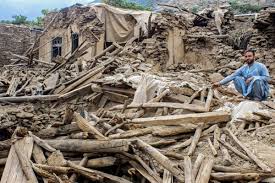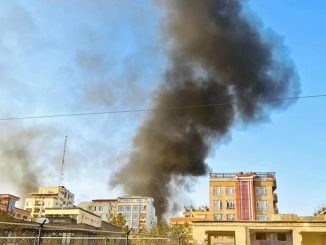
| Published May 11, 2025
The situation for Afghan women, particularly those in the medical field and pursuing education, has become increasingly dire since the Taliban’s return to power in August 2021. Once symbols of progress and independence, female doctors now face systemic barriers, threats, and enforced silence.
🩺 Female Doctors: From Symbols of Progress to Targets of Oppression
In a poignant interview series by JURIST, Afghan female doctors shared their experiences under the Taliban regime. One doctor, who was specializing in mental and neurological medicine before the regime change, described the profound impact on her career and personal life. The Taliban’s policies have led to the closure of medical schools for women, restrictions on women’s movement, and a general atmosphere of fear and repression. These conditions have forced many female healthcare professionals to either leave the country or cease practicing, exacerbating the already strained healthcare system .
📚 The Assault on Female Education
The Taliban’s policies have also severely curtailed educational opportunities for women and girls. Since their return to power, secondary and higher education for girls has been banned, making Afghanistan the only country in the world with such restrictions. By April 2023, 80% of school-aged girls and young women were out of school, including 1.1 million girls of secondary school age .
International organizations like UNICEF have condemned these actions, warning that continued denial of education will have long-term detrimental effects on Afghan society and economy. The ban is projected to lead to an increase in early childbearing and maternal mortality rates, further entrenching gender inequality .
🌍 Global Response and Support
Despite these challenges, there have been efforts to support Afghan women. UNESCO has been instrumental in providing literacy classes for women and girls, particularly in conservative areas like Logar province. These community-based classes, often held in the homes of trained teachers, aim to empower women with basic education and skills .AP News+1The Times+1UNESCO
However, the international community’s response has been inconsistent. Funding cuts to aid organizations have significantly reduced the support available to Afghan women, hindering progress and exacerbating the challenges they face .AP News
This focuses on the situation of Afghan women, especially female doctors and those pursuing education, under the Taliban regime. Here’s a breakdown of the pros and cons based on the content:
Pros:
-
Raising Awareness:
-
The articles highlight the struggles of Afghan women, particularly female doctors, shedding light on the impact of Taliban policies. This helps increase global awareness and advocacy for women’s rights in Afghanistan.
-
-
Resilience of Afghan Women:
-
Despite immense barriers, Afghan women continue to show resilience and determination, whether it’s through continuing their education covertly or finding ways to practice medicine in secret. This can serve as inspiration for others facing oppression worldwide.
-
-
International Support:
-
Organizations like UNICEF and UNESCO have made efforts to support Afghan women. Literacy programs, international aid, and pressure from global organizations demonstrate that the international community continues to stand with Afghan women, even though challenges remain.
-
-
Global Solidarity:
-
The articles reveal that Afghanistan is not alone in the fight for women’s rights. Many international bodies are pushing for change, urging the Taliban to reverse its decisions regarding education and women’s participation in society.
-
Cons:
-
Repressive Taliban Policies:
-
The Taliban’s policies, such as banning female education and restricting women’s roles in the workforce, have led to a major regression in women’s rights. This has a devastating impact on the country’s development, particularly in healthcare and education.
-
-
Limited Access to Education:
-
The ban on girls’ education has left 1.1 million girls out of school and without hope for a brighter future. This hinders personal growth, economic mobility, and societal progress, entrenching gender inequality.
-
-
Health Crisis for Women:
-
Female doctors and healthcare workers are facing systematic exclusion from their professions. The lack of women in medicine and healthcare leads to a gendered health crisis, particularly affecting women’s health and maternal care, as many women in Afghanistan prefer female doctors.
-
-
International Aid and Support Shortcomings:
-
While international organizations are attempting to help, funding cuts and inconsistent support have hindered their ability to provide effective solutions. Aid organizations are struggling to meet the needs of Afghan women, further exacerbating the difficulties they face.
-
-
Uncertain Future:
-
The ongoing repression and lack of political change mean the future for Afghan women remains uncertain. The continuous denial of basic rights and opportunities perpetuates a cycle of poverty, lack of education, and health crises.
-
🔗 Conclusion
The situation of Afghan women under Taliban rule remains dire, with significant setbacks in education, healthcare, and general freedoms. While international efforts and the resilience of Afghan women offer hope, the ongoing repression continues to hinder progress. The international community must increase its support for Afghan women, ensuring that aid reaches those most in need and pressuring the Taliban to reverse policies that perpetuate gender inequality. Without sustained advocacy and action, the future for Afghan women will remain uncertain, and the cycle of oppression will continue to affect generations to come. The resilience and determination of Afghan women are commendable, but their struggles are far from over. It is crucial that the global community continues to stand in solidarity and work toward ensuring Afghan women can regain their rights and opportunities.
SOURCES: JURIST NEWS – Voices of Afghanistan Interview Series: ‘We, the female doctors—once symbols of women’s progress, ability, and independence—are now facing barriers, threats, and silence’
MANARA MAGAZINE – The Taliban’s Onslaught on Female Literacy in Afghanistan and its Impact





Be the first to comment